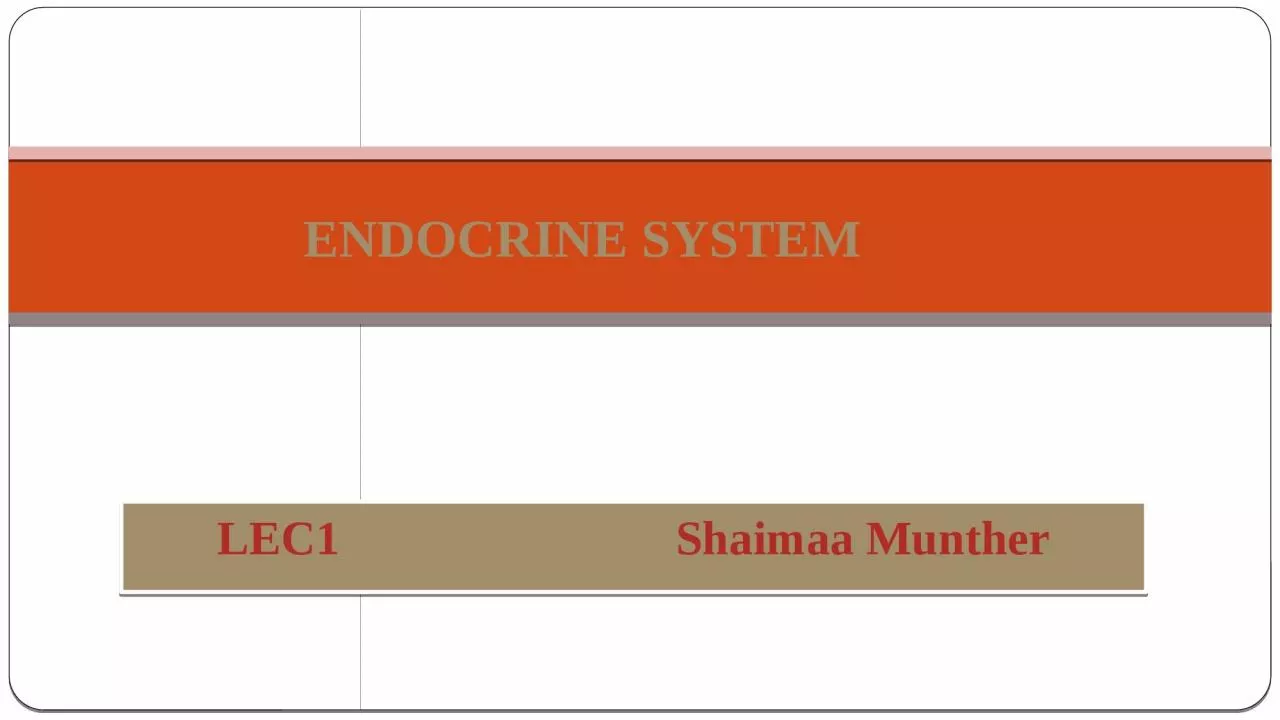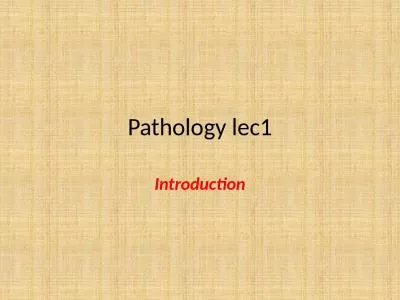PPT-LEC1
Author : claire | Published Date : 2023-05-22
Shaimaa Munther ENDOCRINE SYSTEM The Endocrine system Overview Two major regulatory systems make important contributions to homeostasis The nervous system and
Presentation Embed Code
Download Presentation
Download Presentation The PPT/PDF document "LEC1" is the property of its rightful owner. Permission is granted to download and print the materials on this website for personal, non-commercial use only, and to display it on your personal computer provided you do not modify the materials and that you retain all copyright notices contained in the materials. By downloading content from our website, you accept the terms of this agreement.
LEC1: Transcript
Shaimaa Munther ENDOCRINE SYSTEM The Endocrine system Overview Two major regulatory systems make important contributions to homeostasis The nervous system and The endocrine system In order to maintain relatively constant conditions in the internal environment of the body each of these systems influences the activity of all the other organ systems. Module 2 : Dynamics of Rotating Bodies; Unbalance Effects and Balancing of Inertia ForcesLecture 3 : Concept of unbalance; effect of unbalance In this lecture you will learn the following Unbala What Is Microscope?. It is an instrument which deals with too small organisms that they cannot be seen distinctly with the naked eye. Microscopes provide the observer with enhanced . resolution. (ability to observe two nearby objects as distinct objects), . What is pathology???. Why?. How?. What?. How?. Diseases may, in turn, be defined as an abnormal. variation in structure or function of any part of the body. Pathology is the study . (logos). of disease .
Download Document
Here is the link to download the presentation.
"LEC1"The content belongs to its owner. You may download and print it for personal use, without modification, and keep all copyright notices. By downloading, you agree to these terms.
Related Documents



